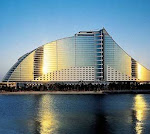An important seaport on the Aegean Sea, Smyrna is the 3rd biggest city in Turkey. It was founded in 3000 B.C. and in 1500 B.C. it was conquered by the Hittites. Following this it became one of the most important cities in the Ionic league. Thereafter it underwent domination by Alexander the Great, the Romans, the Byzantines, and finally it became part of the Ottoman Empire in 1415. However, the Ottoman Smyrna was almost completely devastated in 1922 by an invasion of the Greeks and then by a terrible fire.
The centre of the city is Konak square and here we find the famous clock tower. This tower was built in 1901 by the sultan Abdul Hamit II and is richly decorated in the Ottoman fashion. A short distance away there’s the bazaar, a labyrinth of all sorts of market stalls. The covered market of Kizlaragasi Hani is something special, full of eye-catching shops and was built in 1744 and then restored in 1995.
The Agorà is located in the Namazgah quarter , built according to the desires of Alexander the Great. What we can see today is the reconstruction carried out by Marco Aurelio after the terrible earthquake of 178 A.D. Of notable beauty are the Corinthian columns and the remains of the rooms with vaulted ceilings.
Now we can admire the church of San Policarpo, one of the 7 churches of the Apocalypse which was rebuilt in 1620. Policarpo was condemned to death at the stake by the Romans in 155A.D. for his refusal to reject publicly his Christian faith . According to the legend, the flames of the fire in which he was to die enveloped him but never actually burnt him and so the executioner was forced to stab him to death. The equestrian statue of Ataturk is located in Cumhuriyrt Square which represents the famous captain who led the attack of Ankara during the war of independence in 1922. The quarter of Asansor is very picturesque in which the multi-level streets are interconnected by an old lift of the 14th century which is 51 metres high. The Hisar mosque is without any doubt the most beautiful mosque in Smyrna-it was built and decorated in a Baroque style in 16th century and thereafter restored in the 19th century.
You only have to climb up the hillside of Kadifekale to enjoy a magnificent view of the Gulf of Smyrna- here you’ll find the ruins of a fortress built by Lisimaco during the reign of Alexander the Great . Near to the entrance door through the city walls there are several tea rooms with beautiful balconies from which you can enjoy breath-taking views.
Ancient Ephesus was a commercial and religious centre of great note and we can admire here the ruins which testify as to the importance of its prestigious history.
Cave of the Seven Sleepers of Ephesus
According to the legend , seven young Christians took shelter in this cave to escape religious persecution and they were trapped there only to emerge two centuries later. In reality , this cave is a Byzantine burial ground which is full of tombs cut out of the very rock inside the cave itself.
Gymnasium and Stadium
Now we find ourselves in front of the ruins of what used to be the Oriental Gymnasium which also goes under the name of young girls’ Gymnasium- it dates back to the 2nd century D.C. and is equipped with baths and locations for practising sporting activities.
Grand Theatre
The grand Theatre was built in a Hellenistic style and rebuilt by the Romans between 41 and 117 A.D. The stalls are very interesting and had a maximum capacity of up to 25,000 spectators.
Sacred Way, Celso Library (columns, capitals, and niches.), Hadrian’s Temple,( façade , friezes on the porch-way with the head of Medusa), Hercules’ door( sculpture of Vittoria Alata)
Walking along the Sacred Way , we get to the majestic Celso Library which was built by Celso’s son in honour of his father in 114 A.D.
Of great note are the columns and capitals which have been preserved really well over the centuries.
The niches of the façade house several statues which are kept in the Museum of Ephesus in Vienna today.
A stone’s throw away we find Hadrian’s temple which was built in a Corinthian style.
A noteworthy point are the bas relieves of the main door and the medusa head, which was supposed to ward off evil spirits. At the end of the Curate’s Street we find Hercules’ Door which was built in the 4th century A.D.
The sculpture of the winged Victoria which decorates the doorway has been well preserved.
House of the Virgin Mary: wall under the chapel covered in strips of cloth.
A few kilometres away from Ephesus we find the village of Selcuk where you can visit the famous house of the Virgin Mary. After the death of Jesus Christ it was verified that Saint John took the Virgin Mary to Ephesus to stay in a humble dwelling near to Mount Usignolo where she stayed until her final days. This house became a destination for both Christian and Muslim pilgrims and was officially sanctified by the Vatican. On the 15th of August every year, Christian believers celebrate a ceremony of commemoration . You must have a look at the wall placed beneath the chapel which is completely covered with strips of cloth, handkerchiefs etc. containing prayers and dedications to the sick and deceased, all tied together.
Sunday, March 22, 2009
Subscribe to:
Post Comments (Atom)














No comments:
Post a Comment